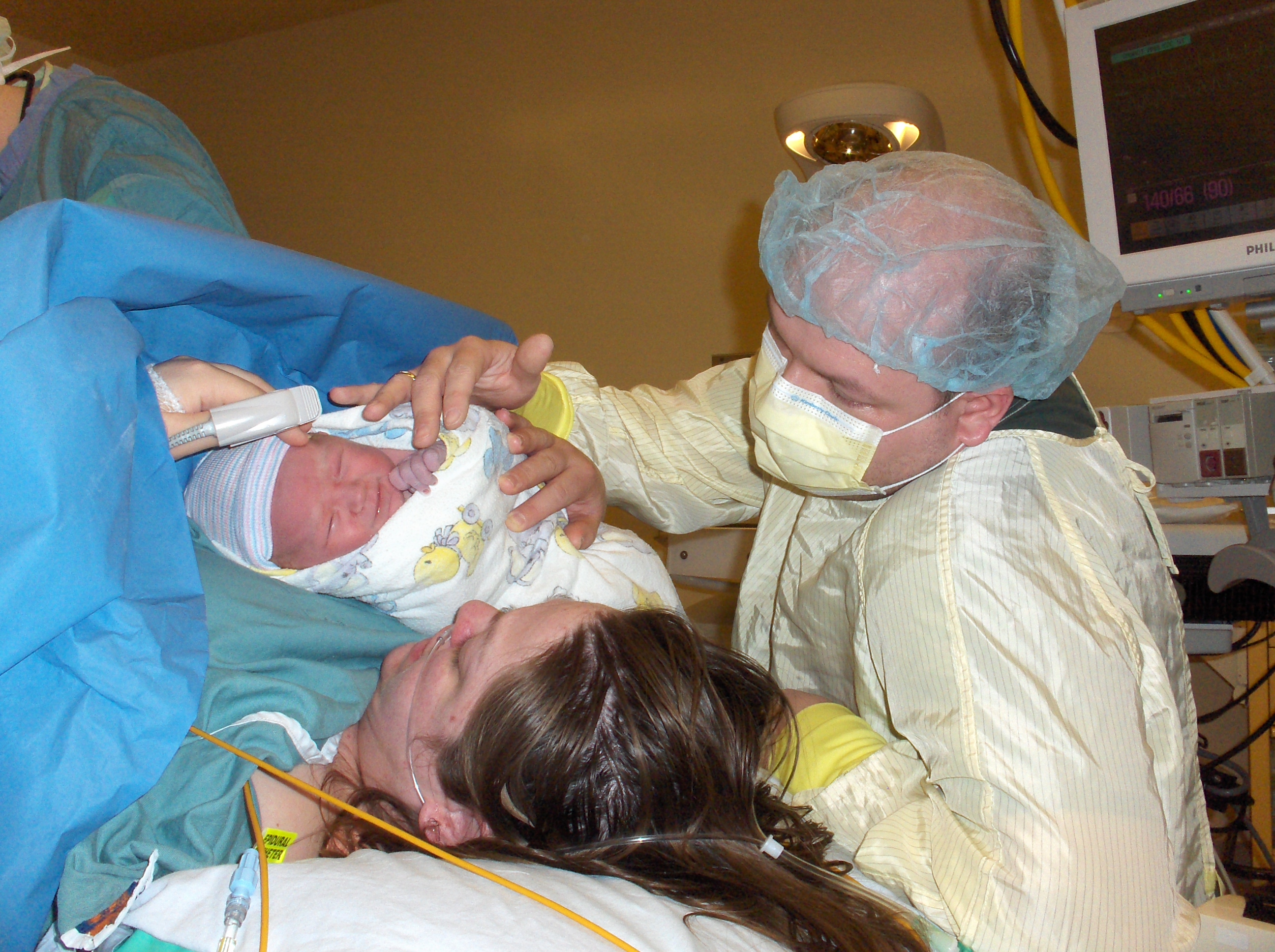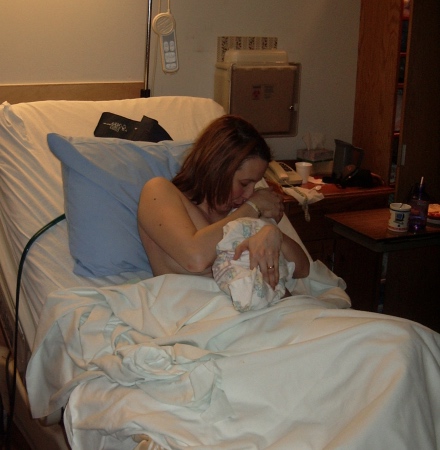Here are some options so that in the event of medical intervention and surgical birth you can promote a calmer and more positive experience.
and surgical birth you can promote a calmer and more positive experience.
We know natural birth is healthy for us and our children. But we also know that in some situations medical intervention outweighs the risk of natural birth.
In the event of medical necessity, we can be happy and accept that we are able to access this life-saving technology. “Health can be present with you even in a surgical procedure, and this will assist in a quick recovery for you and baby – Stay centered with health, while procedures and plans will come and go¨ (Zia Lamrough)
Decisions based upon dreams and ideals are as inappropriate as those based upon fear. If you need medical intervention recognize that moment and remain engaged with the process, your love for your child has the power to heal any trauma and neutralize the damage. “A hospital birth with interventions is not a failure. The birth of a child can and should be a blissful sacred experience regardless of location and circumstances. Enjoy as much as you possibly can” (Ellena, Birth As We Know It).
Apart from the obvious goal of a healthy mom and healthy baby, the other goal in a surgical birth or any medical intervention is to have a positive emotional experience for you and for baby. This will reduce any negative feelings about the birth and help to prevent post-traumatic / operative stress disorder and postpartum depression.
Feelings of being lied to misled or having had information withheld and or not being given your entitlement to informed consent in regards to surgery or medical intervention are all factors in contributing to negative feelings. Knowing that the situation is genuine, having the opportunity as a family to try different options first and feeling satisfied that you did the best for your baby goes a long way to creating a positive experience.
A mother’s feelings about how she was treated also play a huge role in her postpartum recovery: dignity, support, kindness and mothering the mother are hugely beneficial. Birth is a memory that the mother, father and baby carry with them always.
Additionally, the mother and the baby’s experience needs to be as close to what we as humans are genetically programmed to expect and that is that baby remains in close contact with the mother from the moment it emerges from the womb to suckle and bond. A imprinting impulse occurs through the sequence of hormonally triggered events at birth and takes place immediately. If this does not happen or a mother is too drugged to respond, a feeling of grief or loss often follows. As one of my favourite midwives says : “It’s like there is glue on the mom and glue on the baby right at birth, and if they are allowed to settle in together that the glue sticks and they bond. If there is a separation then the glue starts to dry a little bit and the connecting can take a bit more effort. It still happens, but it’s a lot easier if they are able to be together right from the start.”
The Healthy Surgical Birth:
Your choice of doctor and hospital will determine how much of the following you can achieve. However, not all of the list below will be important to you and in some locations striving for just a few of the suggestions below will be a great achievement. Discuss the ideas listed below with your hospital and your doctor to find out what is available, what they do already and what you may need to ask for.
- Speak to your doctor during your pregnancy if they would consider doing a “skin-to-skin cesarean birth”.
- Regional anesthetic is preferable to general anesthetic as the mother is awake for the birth and can take the baby immediately.
- Natural onset of labour with some dilation of the cervix when possible or induced labour where possible.
- Waiting up to 42 weeks in pregnancy where possible (avoid early delivery unless that is a true medical emergency).
- Double sutchering of the uterus.
- Emotional support given by father and the Doula makes a big difference to the mother with their soft touch and kind words.
- Allowing the placenta to birth naturally.
- Delay cutting of the umbilical cord and leaving on the Vernix ( vernix is the protective material that covers the skin of a fetus and helps to protect baby from infections)
- Allow baby to do the Breast Crawl during the recovery period after the surgery. This will ensure proper latch, help expel the placenta (if placenta is birthing vaginally) and speeds up healing for the mother and provides baby with everything it is programmed to receive, giving life long benefits.
- Since one arm will be restricted by the IV or monitors and the mother will be flat on her back a few logistics need to be worked out. Speak to the anesthesiologist about putting the IV in mom’s non-dominant hand. Speak to the doc to see if they can allow a comfortable position so that mother can take the baby and initiate breastfeeding without disrupting the surgery. Additionally, discuss how to keep the surgical gown so it can be opened for baby to go to the breast and how to move the baby through the curtain at the moment of birth. How can Dad, nurse, doula, and pediatrician help Mom and baby to get together ASAP and stay together?
- Keep baby in bed with you to aid with bonding, especially for some time after a surgical birth and when you have been transferred to your room.
- All assessments of the baby can be made at the mother’s breast.
- Other factors that can contribute to mother and baby trauma ie: steel instruments, bright lights, rubber gloves, the smell of anesthetic and antiseptic, loud voices and machinery. Limiting the use of these tools and shifting quickly to a more natural, dim and calm setting ie: the mother’s breast and a less sterile room diminishes trauma. Or explore alternative options like acupuncture, acupressure, hypnotherapy, and homeopathy. If you have taken the Better Birth course rest assured that the self-hypnosis skills that you have learned are hugely beneficial during a c-section as well. This link on hypnosis and surgical birth explains how that works.
- Request healthy birthing practices promoting family togetherness which the family is genetically programmed to expect at birth, triggering the release of hormones you need for health and bonding. The cry, smell, touching, kissing the newborn baby are known set off a high in the mother who watches the umbilical cord pulsate. The family travels together to their room to continue on their wonderful journey. The baby hears the familiar voices and heartbeat of its mother and smells its mother. The mother’s heart rate and temperature can stabilize the sickest of newborns. This philosophy of care is sometimes referred to as family-centered care.
- Room in with the baby and request baby to be bathed in your room next to you.
- Establish breastfeeding early and often, ensuring many health and emotional benefits for both mother and baby. Breastfeeding can help mothers feel competent and whole.
- Be kind to yourself and take your time while you find comfortable positions for breastfeeding. Side-lying position or football hold may be helpful. Find pillows to help you be comfortable. Contact the Breastfeeding support groups for more help.
- Giving formula milk, bottles or pacifiers can disrupt proper latch and interfere with milk supply. Enlist the support of the lactation consultant while at the hospital so that you have the guidance and assistance to make breastfeeding doable.
- Ensure to eat and drink well and get good rest. Be kind to yourself and take good care of yourself for the following 6 weeks and allow your body to heal. Arrange for as much help and support for domestic chores.
- Take the placenta home and consider encapsulation. Before you become too weirded out, please read the post on all the amazing benefits of encapsulation such as increased energy and milk supply, greatly reduced bleeding and protection from postpartum depression.
- Be sure your pain is managed well, pain is a large factor for preventing breastfeeding and causing depression.
There are times when the baby needs to go to the nursery or NICU. The following tips can help maintain the contact with baby:
- Request to allow the father to provide skin to skin contact to baby. Perhaps carrying baby to NICU if there is no medical urgency. Pack a button down shirt or zip hoodie for Dad in the hospital bag so that he can easily do skin-to-skin with baby.
- Pump colostrum before the birth so that you have a small stockpile which can be given to baby and if at all possible avoid formula milk.
- Request to allow baby to be taken to mother or mother to the baby. You may not be able to get up and get baby. Request that the nurse bring baby to you. Lots of skin-to-skin contact between mother and baby when they can be together.
- Request kangaroo care while at the hospital. This can be done by your partner as well. kangaroomothercare.com
- Ask for phthalate-free feeding systems, certain chemicals in IV bags can be harmful.
- Once you are back at home, consider an extended “in arms phase” with the baby and carry baby around in a sling or a baby carrier as you go about your daily activities, have your baby continue to sleep near or with you. Lots of skin-to-skin contact can do wonders.
- Get therapy for mum and baby if needed. Contact a support network www.ican-online.org
- For Mom: A really yummy meal when she can eat again, massage and even aroma therapy. Flower and herb remedies. Be sure to check with the naturopathic doctor before taking herbal remedies.
Of course all of this requires some good conversation with the doctors, midwives and pediatricians but many of these options are already being offered in hospitals. Some of them are even standard procedures at our local hospital. Commitment to breastfeeding and explaining to the doctor your wishes ie; “bonding and breastfeeding are important to me” can go a long way in getting their support.
I hope this helps you create a more positive surgical birth.
Marie





6 thoughts on “Maintaining health in surgical birth – the best possible ceasarean birth”
Marie (or any other Regina-area mamas who can help out), do you know of any local OBs who are open to these kinds of suggestions? Our next babe will have to be a c-section due to various medical issues, and I want to be prepared before I actually get pregnant LOL. Any suggestions would be greatly appreciated!!!!
Tiffany… Did you know that here in Regina we have a local Chapter of ICAN (International Cesarean Awareness Network) and it’s a group made of moms who have had similar experiences and wish to support both VBAC and gentler cesarean birth options. I think that meeting up with these women who really help you get the answers that you are looking for. To find them, just search facebook for ICAN regina and send them a message asking about meeting times. 🙂 GOOD LUCK. 🙂 Marie
Oh Marie! Ishould havecord found this article before! Is this possible, allowing the placenta to birth vaginaly? I asked them to let the cord pulsate, but I don t know if they heard my wish. This article is great! maybe everyone should know about the possibilities, just in case you can`t avoid c-section!
s.
Sabine, I know that it’s possible for the placenta to birth vaginally, but I’m not sure if any of the OBs in Regina do this. I will investigate.
Marie what a beautiful and informative article! thank you!
Reblogged this on China HypnoBirthing and commented:
Recently, I came across this post about ceasarean births. It’s from 2010, but the information is still relevant. The post gives great preparation for women who know they will have a C-section and want to keep things as calm and close to nature as possible.